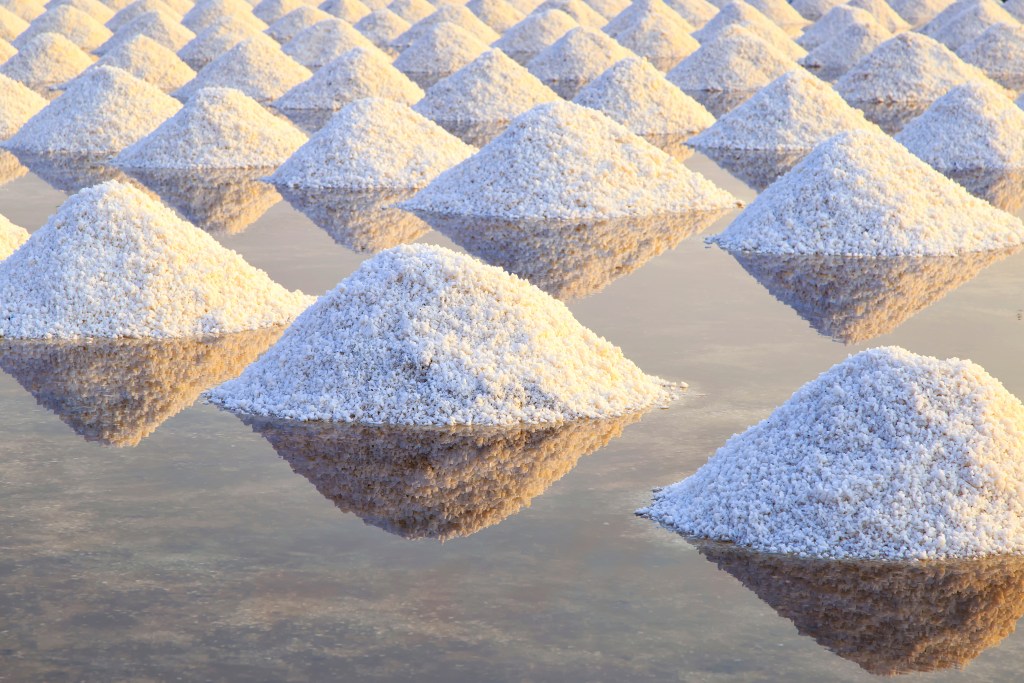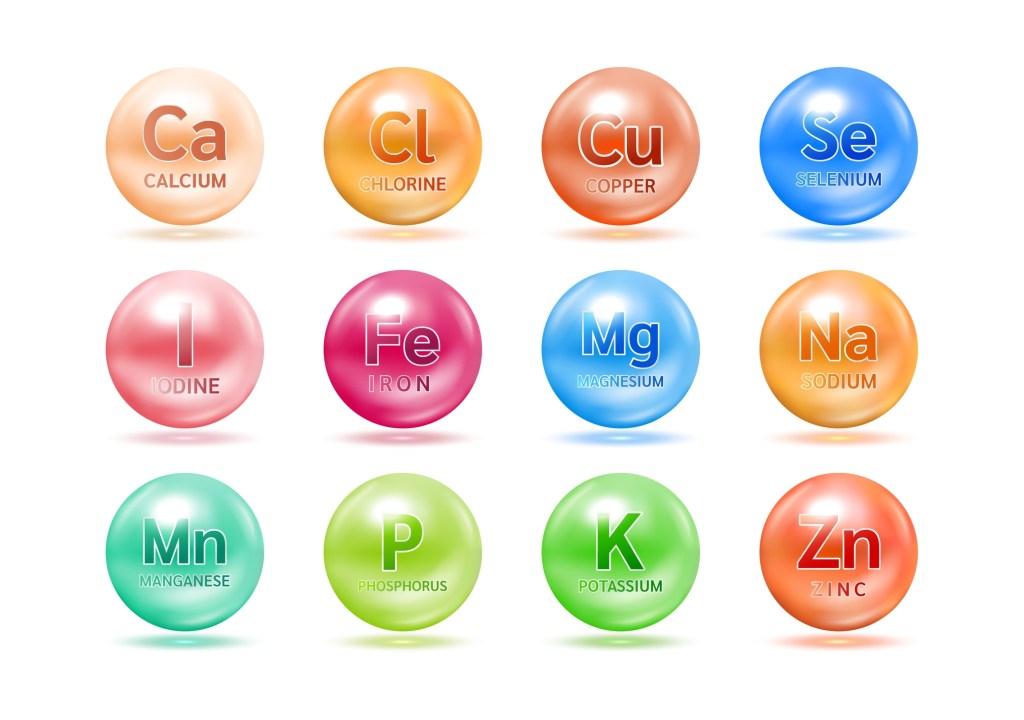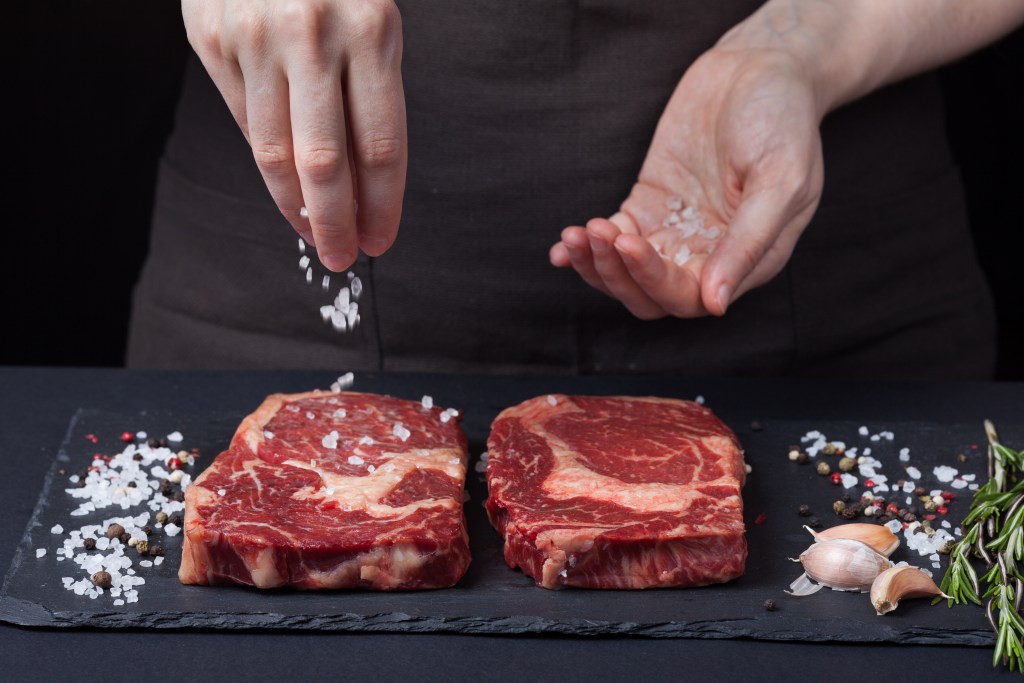At a glance
Celtic salt is a mineral-rich sea salt valued for its natural trace elements and lower processing compared to regular table salt. When used in moderation, it may support hydration, digestion, and overall mineral balance, making it a healthier alternative for everyday seasoning.
Celtic salt is a mineral-rich sea salt that offers numerous health benefits. Compared to table salt, this naturally harvested salt is minimally processed and less likely to be contaminated with microplastics.
Here are four Celtic salt benefits and practical tips on incorporating this nutritious sea salt into your routine.
What is Celtic salt?
Celtic salt is a type of sea salt harvested from certain coastal regions of France. This type of natural salt is produced by evaporating seawater in carefully controlled salt pans, leaving behind crystallized salt.
Like many other sea salts, Celtic salt retains various minerals that are present in the ocean, resulting in a mineral-rich salt product.
Celtic salt contains trace amounts of essential minerals such as magnesium, calcium, potassium, copper, zinc, and iron. This mineral composition is responsible for its slightly dark color, which explains why it’s also called Celtic gray salt.
Compared to regular or rock salt, Celtic salt retains some moisture, giving it a unique texture and flavor profile. However, its moisture content also increases the risk of clumping, so it’s essential to store Celtic salt in a sealed container.
Watch the video below to discover the difference between pink Himalayan salt and Celtic salt.
Does the type of salt you consume matter?
Yes, the type of salt you consume matters.
Regular table salt is typically bleached and heavily processed, resulting in a salt product without significant mineral content.
In addition, table salts are often combined with sodium aluminum silicate, an anti-caking compound that prevents clumping.
According to a study published in Emergency Medicine International, chronic exposure to aluminum compounds can have neurotoxic effects and may increase the risk of Alzheimer’s disease.1
In contrast, sea salts and certain rock salts, including Himalayan salt, aren’t excessively processed, retain essential trace minerals, and typically don’t contain chemical anti-clumping agents.
However, both table and sea salt can be contaminated with microplastics due to the widespread plastic pollution of the world’s oceans.
However, evidence published in Scientific Reports found that French sea salt products were less likely to be contaminated than salt varieties harvested in Portugal or Australia.2
To minimize microplastic exposure, it’s crucial to opt for a Celtic salt that has been produced using filtered ocean water free of impurities, microplastic, and other environmental pollutants.

Why you need sodium chloride in your diet
Most sea salts contain around 97 percent sodium chloride, an essential electrolyte that dissolves into sodium and chloride ions when suspended in water.
Both sodium and chloride are needed to maintain electrolyte balance, which is crucial for regulating bodily fluids, muscle function, and nerve signal transmission.
Chloride ions also help regulate the body’s acid-base balance, which is vital for maintaining optimal pH levels.
Low salt intake can increase the risk of heart attacks and electrolyte imbalances and may disrupt nerve and muscle functioning.
In addition, research published in the Journal of Insulin Resistance found that inadequate sodium intake can increase insulin resistance, a leading cause of diabetes.3
The authors concluded, “Low-salt diets lead to systemic or vascular insulin resistance, glucose intolerance, and elevated fasting insulin.”
However, excessive salt consumption can also have detrimental health effects.
Consuming too much sodium, especially in combination with low potassium intake, can lead to significant fluid retention, which is linked to high blood pressure and kidney issues.

4 potential health benefits of Celtic sea salt
In addition to being minimally processed and less likely to contain contaminants, Celtic sea salt has been linked to several health benefits.
Here are four reasons to consider adding Celtic sea salt to your routine.
1. Source of essential minerals
Compared to regular salt, Celtic salt contains significantly higher concentrations of electrolytes and trace minerals.
Celtic salt is a source of several essential minerals, including:
In addition, Celtic salt contains trace amounts of iodine, a vital mineral that promotes thyroid health.
2. Supports digestive health
Sodium is a key component of hydrochloric acid (HCl), also known as stomach acid. Optimal HCl levels play a critical role in breaking down proteins and triggering the release of digestive enzymes.
In addition, Celtic sea salt contains magnesium. This essential mineral helps regulate smooth muscle function in the digestive system and enhances the activity of enzymes involved in nutrient absorption and energy production.

3. Helps strengthen immune defenses
In addition to sodium’s role in maintaining the body’s fluid balance, mineral-rich salt can benefit the immune system.
Trace minerals, including zinc, iron, copper, manganese, and selenium, play essential roles in the development and function of immune cells while regulating balanced immune responses.
Although Celtic salt contains only small amounts of these nutrients, regular consumption, in combination with a nutritious diet, can contribute to optimal nutrient stores and help prevent trace mineral deficiencies.
Due to its role in stomach acid production, salt can also help defend against invading microbes that enter the body through the digestive tract, potentially preventing gastrointestinal infections.
4. May aid blood pressure regulation
Consuming Celtic sea salt could benefit individuals with high blood pressure, also known as hypertension.
A study published in Food & Nutrition Research found that sea salt varieties are less likely to contribute to elevated blood pressure than regular table salt. The authors suggest that this effect is linked to the potassium content in sea salts.4
Potassium is a crucial electrolyte involved in the body’s fluid balance and blood pressure regulation. Celtic sea salt may offer an excellent alternative to mineral-depleted table salt for those at risk of hypertension or heart disease.

How to use Celtic salt
Celtic salt’s mineral composition and moisture content add depth and complexity to savory dishes without overpowering them. This makes Celtic salt an excellent finishing salt that provides flavor and texture when sprinkled onto grilled meats, fish, salads, roasted vegetables, and even desserts.
In addition to seasoning foods, Celtic salt is a source of essential electrolytes and can help promote optimal hydration and electrolyte balance.
This may be especially beneficial for individuals at increased risk of dehydration due to excessive sweating, athletes with heavy exercise routines, or those practicing intermittent or prolonged fasting.
General salt intake recommendations suggest limiting salt intake to two grams daily. However, certain individuals may require a significantly higher salt intake to maintain electrolyte balance.
Fasting and excessive sweating can trigger fluid loss, leading to electrolyte depletion and dehydration, linked to headaches, muscle cramps, fatigue, and dizziness.
“To maintain a good ratio of sodium chloride and essential minerals, I recommend taking between one to two teaspoons of mineral-rich Celtic or Himalayan salt per day, “ explains Dr. Berg.
Adding Celtic salt to drinking water can be an excellent strategy to promote optimal fluid levels and replenish electrolytes. In addition, salt-infused water doesn’t contain any calories, and taking salt won’t break a fast.
How much Celtic salt you should add to your routine also depends on your overall salt intake. Individuals who regularly consume processed foods typically consume more salt than the body needs, and adding Celtic salt may increase the risk of high blood pressure.
In addition, people taking hypertensive drugs and those with cardiovascular issues should consult a healthcare provider before increasing salt intake to minimize the risk of side effects.
Key takeaways
- Refined table salt is often stripped of minerals and may contain additives, while Celtic salt retains natural trace minerals and moisture.
- Celtic salt benefits include supporting fluid balance, digestive efficiency, and immune function due to its natural mineral content.
- Choosing high-quality, unrefined Celtic salt harvested from clean waters helps minimize exposure to additives and contaminants found in processed table salts.
- Celtic salt can be used as a flavorful finishing salt or dissolved in water, but intake should be adjusted to individual needs and overall dietary salt consumption.
FAQ
1. What are the health benefits of Celtic salt?
Celtic salt contains various nutrients and electrolytes, including potassium, sodium, magnesium, copper, and zinc.
Consuming Celtic salt in combination with a nutritious diet can promote digestive health, enhance immune defenses, support electrolyte balance, and improve blood pressure control.
2. Which is better, Celtic salt or Himalayan salt?
Both Celtic and Himalayan salt contain trace minerals and electrolytes, making them nutritious alternatives to regular table salt. However, these two salts have different mineral compositions, which results in unique characteristics.
Celtic salt contains slightly more potassium and magnesium and has a moist, crystalline texture. Himalayan salt is a dry rock salt that contains more iron oxide, which is responsible for its pink color.
3. Is Celtic salt good for gut health?
Yes, Celtic salt can help promote digestive health. Sodium chloride is a crucial element of stomach acid needed for digestive processes, gallbladder function, and digestive enzyme release.
This mineral-rich sea salt also contains magnesium, which is vital for the functioning of the smooth muscles lining the digestive tract.
4. What is the healthiest salt?
Minimally processed and traditionally harvested salts such as Himalayan rock salt, Celtic sea salt, Baja salt, and other unrefined salts are considered healthier than regular table salt.
In contrast to regular salt, these natural salts are not heavily processed or bleached, retain their mineral content, and are less likely to contain artificial anti-caking agents or environmental contaminants.
5. Does Celtic sea salt have magnesium?
Yes, Celtic sea salt contains more magnesium than other natural salt varieties. Celtic salt is produced by evaporating filtered saltwater, leaving behind salt crystals that retain some of the ocean’s minerals, including magnesium.
Magnesium ions attract water, which explains why Celtic salt has a moist texture and must be stored in an airtight container to prevent clumping.








